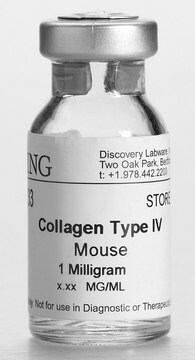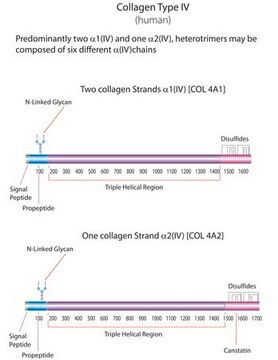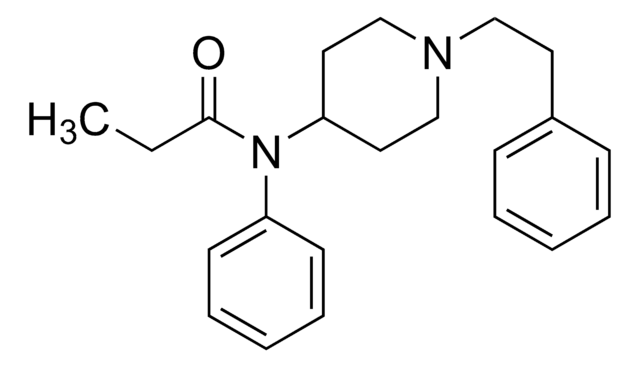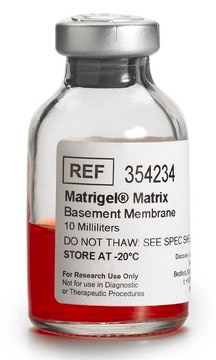C0543
Rat Collagen Type IV
from Engelbreth-Holm-Swarm murine sarcoma basement membrane, lyophilized powder, suitable for cell culture, used for 3D hydrogel formation
Synonym(e):
Type IV collagen, EHS-collagen
About This Item
Empfohlene Produkte
product name
Kollagen aus Engelbreth-Holm-Swarm murine sarcoma basement membrane, Type IV (Miller), lyophilized powder, BioReagent, suitable for cell culture
Biologische Quelle
mouse (Engelbreth-Holm-Swarm murine sarcoma basement membrane)
Qualitätsniveau
Typ
Type IV (Miller)
Produktlinie
BioReagent
Form
lyophilized powder
Verpackung
glass bottle of 1 vial
Methode(n)
cell culture | mammalian: suitable
Oberflächendeckung
6‑10 μg/cm2
Löslichkeit
0.25% acetic acid: 0.5-2.0 mg/mL (Keep at 2-8 °C for several hours, occasionally swirling.)
Versandbedingung
dry ice
Lagertemp.
−20°C
Angaben zum Gen
mouse ... Col4a1(12826) , Col4a2(12827) , Col4a3(12828) , Col4a5(12830) , Col4a6(94216)
Allgemeine Beschreibung
Anwendung
- in adhesion assays.
- in hydrogel fabrication.
- to coat cell culture plates for cell differentiation.
- to treat round plastic coverslips for scanning electron microscopy (SEM) analysis in an interaction study between A. culbertsoni trophozoites and Schwann cells.
Biochem./physiol. Wirkung
Sonstige Hinweise
Menge
Angaben zur Herstellung
Pepsin is not used in the preparation.
Lagerklassenschlüssel
11 - Combustible Solids
WGK
WGK 1
Flammpunkt (°F)
Not applicable
Flammpunkt (°C)
Not applicable
Persönliche Schutzausrüstung
Eyeshields, Gloves, type N95 (US)
Analysenzertifikate (COA)
Suchen Sie nach Analysenzertifikate (COA), indem Sie die Lot-/Chargennummer des Produkts eingeben. Lot- und Chargennummern sind auf dem Produktetikett hinter den Wörtern ‘Lot’ oder ‘Batch’ (Lot oder Charge) zu finden.
Besitzen Sie dieses Produkt bereits?
In der Dokumentenbibliothek finden Sie die Dokumentation zu den Produkten, die Sie kürzlich erworben haben.
Kunden haben sich ebenfalls angesehen
Artikel
3D cell culture overview. Learn about 2D vs 3D cell culture, advantages of 3D cell culture, and techniques available to develop 3D cell models
Cancer stem cell media, spheroid plates and cancer stem cell markers to culture and characterize CSC populations.
Cancer stem cell media, spheroid plates and cancer stem cell markers to culture and characterize CSC populations.
Extracellular matrix proteins such as laminin, collagen, and fibronectin can be used as cell attachment substrates in cell culture.
Unser Team von Wissenschaftlern verfügt über Erfahrung in allen Forschungsbereichen einschließlich Life Science, Materialwissenschaften, chemischer Synthese, Chromatographie, Analytik und vielen mehr..
Setzen Sie sich mit dem technischen Dienst in Verbindung.









